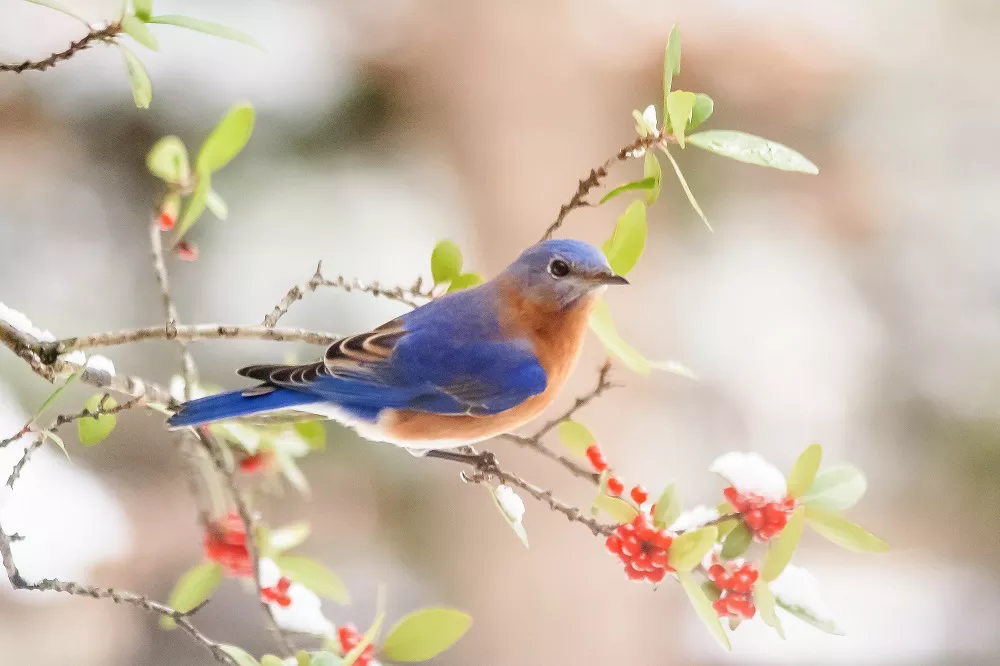Bluebirds, with their vibrant plumage and gentle demeanor, have long captured the hearts of bird enthusiasts and nature lovers. While their striking appearance is undoubtedly captivating, the melodious songs they produce add an extra layer of charm to these beloved birds. In this article, we will delve into the enchanting world of bluebirds and explore the captivating sounds they create. Join us as we unravel the mystery of what a blue bird sounds like.
Bluebirds: A Brief Introduction:
Bluebirds belong to the thrush family and are known for their stunning blue feathers, which vary in shades depending on the species. Three species of bluebirds are commonly found in North America: the Eastern Bluebird (Sialia sialis), the Western Bluebird (Sialia mexicana), and the Mountain Bluebird (Sialia currucoides). While they may differ slightly in appearance and habitat, all bluebirds share an affinity for producing beautiful songs that enhance their presence in the avian world.
The Varied Calls of Bluebirds:
Eastern Bluebird:
The Eastern Bluebird, often found in meadows, open woodlands, and along country roads, produces a repertoire of distinct vocalizations. Its primary call is a soft, musical warbling or trilling sound, often described as a gentle, melodious song. The song consists of short, musical phrases repeated several times, creating a pleasant and soothing melody. The call of the Eastern Bluebird is often associated with the arrival of spring, signaling the beginning of the breeding season.
Western Bluebird:
The Western Bluebird, found in open woodlands, grasslands, and agricultural areas, possesses a song similar to that of its Eastern counterpart but with subtle variations. The song is a series of warbling notes, rich and flute-like, with a sweet and mellow quality. The Western Bluebird’s call is often softer and more delicate compared to other songbirds, creating a serene and peaceful atmosphere in its habitat.
Mountain Bluebird:
The Mountain Bluebird, known for its preference for open areas at higher elevations, has a distinctive and beautiful song that sets it apart. Its song consists of a series of soft warbles and musical trills, creating a cascading melody that fills the air. The Mountain Bluebird’s song is often described as ethereal and uplifting, evoking a sense of freedom and tranquility.
Calls Beyond Songs:
While bluebirds are best known for their melodious songs, they also produce a range of other vocalizations, each serving a specific purpose in their communication.
Contact Calls:
Bluebirds use contact calls to communicate with their mates or other members of their flock. These calls are short and high-pitched, often resembling a soft “chirp” or “chup.” Contact calls help bluebirds maintain social cohesion and alert others to their presence.
Alarm Calls:
When bluebirds sense potential danger, they emit distinct alarm calls to alert their flock and nearby birds. These calls are often sharp and loud, serving as a warning to others and encouraging them to take cover or be vigilant.
Nesting Calls:
During the breeding season, male bluebirds produce soft, gentle calls to attract a mate and establish their territory. These calls are melodic and romantic, serving as a courtship display to impress potential partners.
The Purpose of Bluebird Songs:
The captivating songs of bluebirds serve various essential purposes in their lives:
Territory Establishment:
Male bluebirds use their songs to establish and defend their territories. By singing from prominent perches, they communicate their presence and claim ownership of a particular area, deterring potential rivals from encroaching.
Mate Attraction:
The melodious songs of male bluebirds play a crucial role in attracting females for breeding purposes. The quality and complexity of their songs serve as indicators of their fitness and genetic superiority, impressing potential mates and increasing their chances of successful courtship.
Communication:
Bluebirds use their songs to communicate with their mates, flock members, and offspring. These vocalizations help maintain social bonds, coordinate foraging activities, and convey important information within the bluebird community.
Conclusion:
Bluebirds, with their enchanting songs and stunning blue plumage, bring joy and beauty to the natural world. Their melodious calls, ranging from gentle warbles to cascading trills, create a harmonious atmosphere in their habitats. Whether it’s the sweet song of the Eastern Bluebird, the serene melodies of the Western Bluebird, or the ethereal tunes of the Mountain Bluebird, these avian musicians fill the air with their unique vocalizations. So, the next time you encounter a bluebird, take a moment to listen and appreciate the captivating sounds they produce, adding a touch of magic to the world of birds.
Related topics:
- Where Do Bluebirds Sleep At Night?
- What Do Bluebirds Symbolize?
- How Long Do Bluebirds Live?
- What Size Hole For Bluebird House?


 Facebook
Facebook  Instagram
Instagram  Youtube
Youtube 